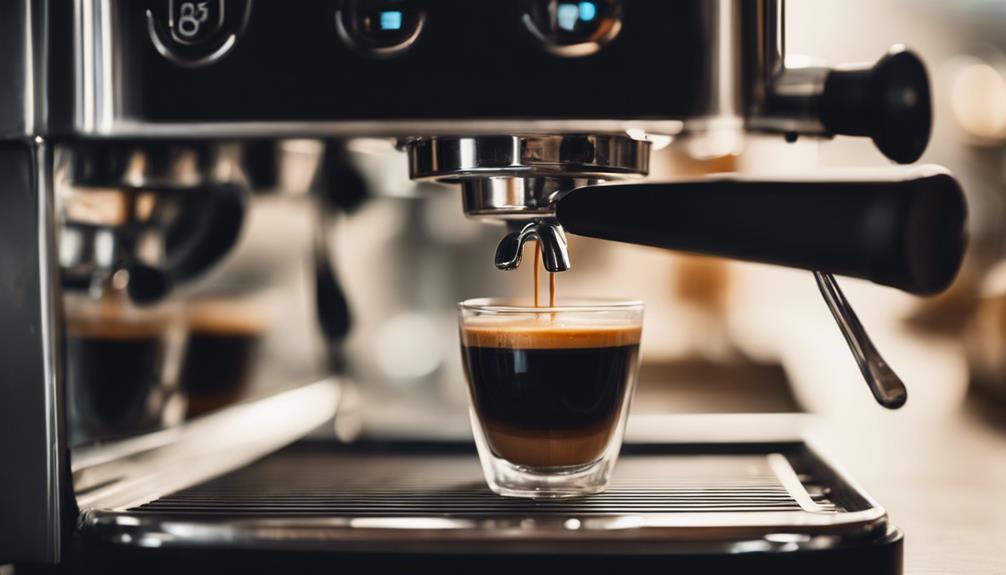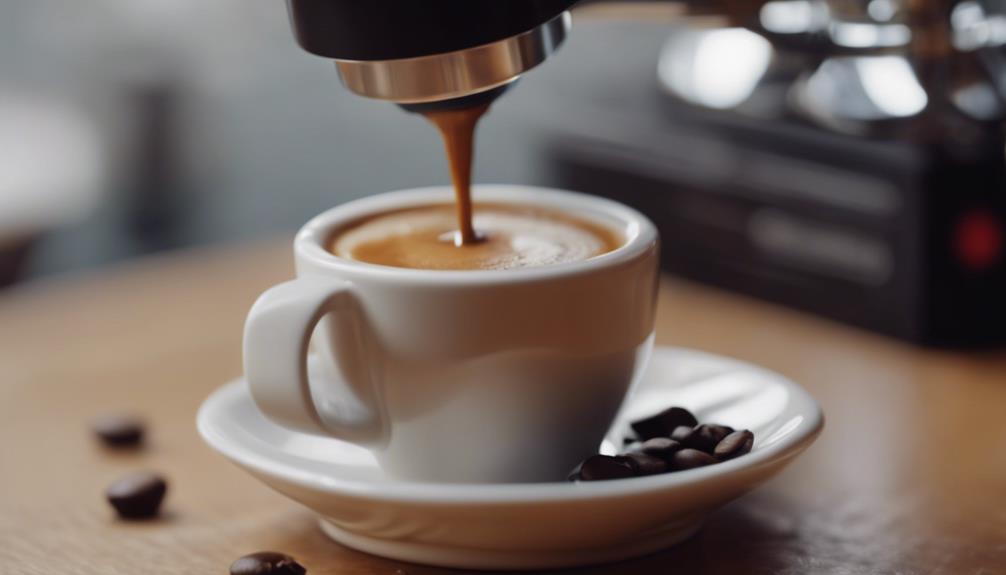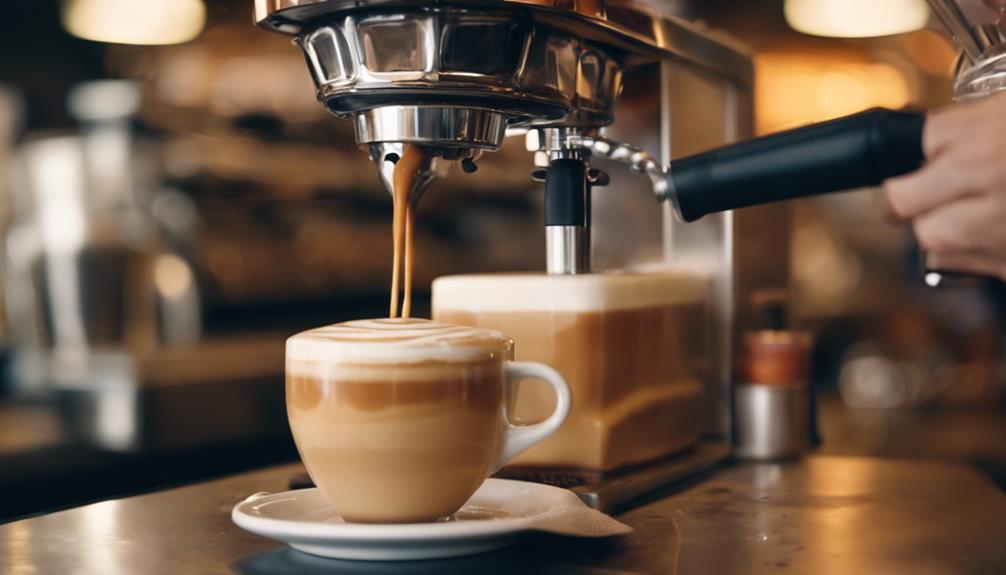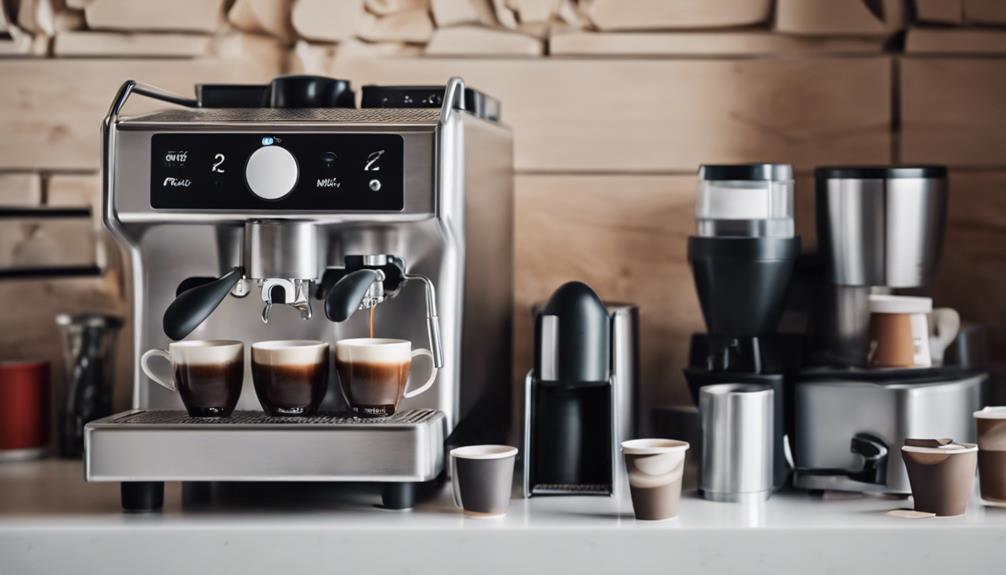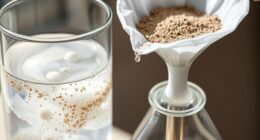To ensure your espresso is not under-extracted, it is important to maintain a water temperature between 195-205°F. Using cold water can result in a weak flavor, while water above 205°F can lead to over-extraction. Consistency in coffee grind size is crucial; irregular size can cause weak shots. Adjust the grind based on taste for a more flavorful brew. The brewing time plays a key role; too short of a time means less flavor. Ratios are essential; aim for a 1g coffee to 15g water ratio for a balanced taste. Uneven coffee distribution can result in less satisfying shots. Consistent tamping pressure is necessary for even extraction. Water quality also impacts flavor, so it’s best to use filtered water. By mastering these factors, you can achieve a well-balanced espresso.
Key Takeaways
- Inconsistent tamping pressure leads to under-extracted areas in the puck.
- Varied pressure causes channels within the coffee puck.
- Uneven water flow through grounds from inconsistent tamping.
- Drastic impact on flavor from uneven extraction in the puck.
- Aim for level and consistent tamping to avoid under-extraction.
Inadequate Water Temperature
Maintain the water temperature of your espresso machine between 195-205°F to avoid under-extracted espresso. Proper extraction relies heavily on the right water temperature, as water that's too cold can lead to inadequate extraction, resulting in a weak and sour-tasting espresso.
When the water temperature falls below 195°F, the process of extracting flavors from the coffee grounds is compromised, leading to under-extracted espresso lacking in depth and richness.
Conversely, water that's too hot, above 205°F, can cause over-extraction, resulting in a bitter and unpleasant taste in your espresso. Finding the optimal water temperature between 195-205°F is essential for achieving a well-balanced extraction, where the flavors from the coffee grounds are properly extracted, resulting in a delicious and aromatic espresso.
Improper Coffee Grind Size
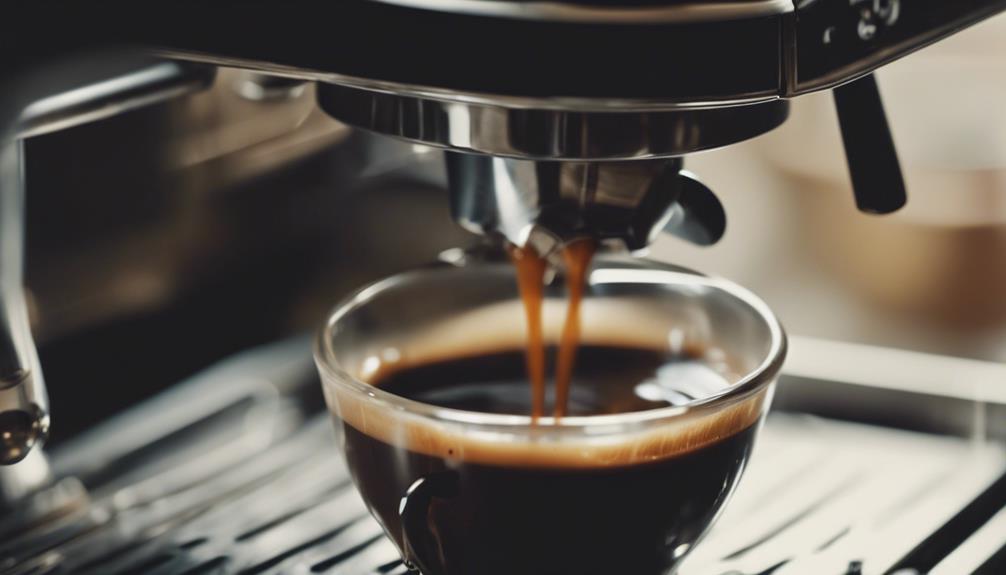
When your coffee grind size is inconsistent or your grinder calibration isn't accurate, it can lead to under-extracted espresso.
To guarantee a balanced extraction, focus on maintaining grind size consistency and calibrating your grinder correctly.
These factors play a vital role in achieving a well-extracted and flavorful espresso shot.
Grind Size Consistency
To achieve ideal extraction in espresso brewing, ensuring consistent grind size is vital to avoid under-extracted shots. Grind size directly impacts the rate of water flow through the coffee grounds during the brewing process.
If the grind size is inconsistent, some particles may be too fine, causing water to pass through too quickly and leading to under-extracted coffee that tastes sour and lacks complexity. On the other hand, if some particles are too coarse, water flows through too fast, resulting in weak and under-extracted espresso that lacks body and flavor.
Maintaining a uniform grind size is essential for achieving balanced extraction and flavorful espresso. By adjusting the grind size based on taste and extraction speed, you can prevent under-extraction and ensure that your espresso is rich, full-bodied, and well-developed in flavor.
Consistency in grind size is a key factor in the quest for the perfect shot of espresso.
Grinder Calibration Accuracy
Ensure your grinder is accurately calibrated to avoid improper coffee grind size, which can result in under-extracted espresso. Maintaining grinder calibration accuracy is essential to achieving the correct grind size, ensuring peak extraction during the brewing process.
Here are a few vital points to keep in mind:
- Consistent Calibration: Regularly check and adjust your grinder settings to guarantee precision in grind size, preventing under extraction issues.
- Extraction Uniformity: Proper grinder calibration promotes consistency in grind size, leading to uniform extraction and balanced espresso flavor.
- Precision in Adjustments: Fine-tune your grinder with care, making small and precise grind size adjustments to avoid under extraction and enhance the quality of your espresso.
Insufficient Brew Time
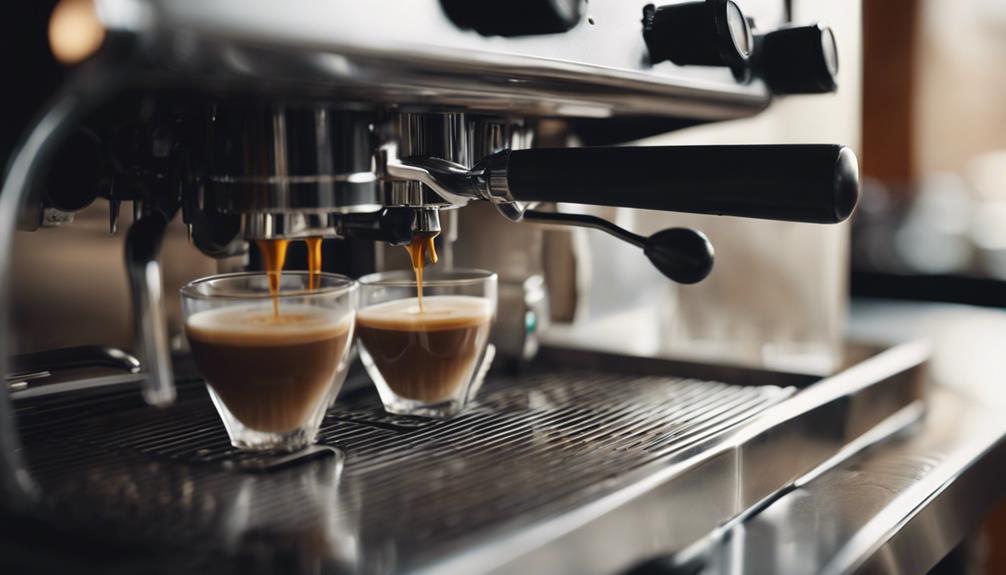
When pulling espresso shots, inadequate brew time can lead to under-extraction, resulting in unbalanced flavors.
Checking your machine settings for the correct brew time is crucial to guarantee ideal extraction.
Adjusting the grind size accordingly can help achieve a well-extracted espresso shot with the desired flavors.
Brew Time Impact
Insufficient brew time leads to under-extracted espresso, resulting in a lack of flavor extraction from the coffee grounds. When your brew time is too short, the extraction process doesn't fully draw out the rich flavors and aromas locked within the coffee beans. This can lead to a disappointing espresso shot that lacks the complexity and depth you'd expect.
To understand the impact of brew time on your espresso, consider the following:
- Inadequate extraction time hinders the release of the coffee's full flavor profile.
- Short brewing times result in a weak and underwhelming taste experience.
- Under-extracted espresso may exhibit a sour or unbalanced flavor profile.
To avoid these outcomes and ensure a delicious cup of espresso, it's essential to adjust your brew time accordingly. By giving the grounds sufficient time to interact with hot water, you can enhance the extraction process, resulting in a more flavorful and satisfying espresso shot.
Machine Settings Check
To address potential issues with under-extracted espresso caused by insufficient brew time, it is crucial to verify and adjust your espresso machine settings accordingly. Proper calibration of your espresso machine can greatly impact the brew time, ultimately affecting the extraction process. Check the following machine settings to make sure they are optimized for extracting a well-balanced espresso:
| Machine Settings | Adjustment Tips |
|---|---|
| Grind Size | Finer grind for longer brew time |
| Water Temperature | Increase for better extraction |
| Pressure | Adjust based on extraction speed |
| Pre-Infusion Time | Longer pre-infusion for more flavor |
| Shot Volume | Confirm correct amount per shot |
Grind Size Adjustment
Adjusting the grind size is key to addressing under-extracted espresso caused by insufficient brew time. When your grind size is too coarse, the water flows through the coffee grounds too quickly, resulting in an under-extracted espresso that lacks the full depth and flavor complexity you desire.
To combat this issue, consider the following:
- Fine-tune your grind size: Experiment with adjusting the grind size to find the ideal extraction point.
- Monitor the flow rate: Pay attention to how quickly the espresso flows out of the machine to gauge the extraction process.
- Taste test your espresso: Regularly taste your espresso to determine if it's properly extracted or if further adjustments to the grind size are necessary.
Incorrect Coffee-to-Water Ratio

Using an imbalanced coffee-to-water ratio can lead to under-extracted espresso, impacting the flavor and quality of your shot. To achieve a balanced extraction, the golden rule is to use 1 gram of coffee for every 15 grams of water.
When the ratio is off, either by using too little coffee or too much water, the result is a weak and diluted espresso shot. Adjusting the coffee-to-water ratio is crucial in obtaining the best flavor profile for your espresso.
A proper ratio guarantees that the coffee grounds are thoroughly extracted, bringing out the rich flavors and aromas in your shot. Experimenting with different ratios allows you to fine-tune the extraction process, ultimately leading to a well-balanced and flavorful espresso.
Uneven Coffee Distribution

Properly distributing the coffee grounds in the portafilter is essential to prevent under-extracted espresso. When the coffee is unevenly distributed, some areas of the coffee puck extract faster than others, leading to an imbalanced extraction. This inconsistency affects the flavor and overall quality of the espresso shot.
To avoid under-extracted espresso, baristas should aim for a level, evenly distributed coffee bed, ensuring a uniform extraction for a well-balanced shot.
Uneven distribution impacts the extraction process, resulting in a lack of consistency in flavor.
Under-extracted espresso can be a direct consequence of not properly distributing the coffee grounds.
The coffee puck's unevenness can lead to a less satisfying espresso experience due to the varied extraction levels across the puck.
Inconsistent Tamping Pressure
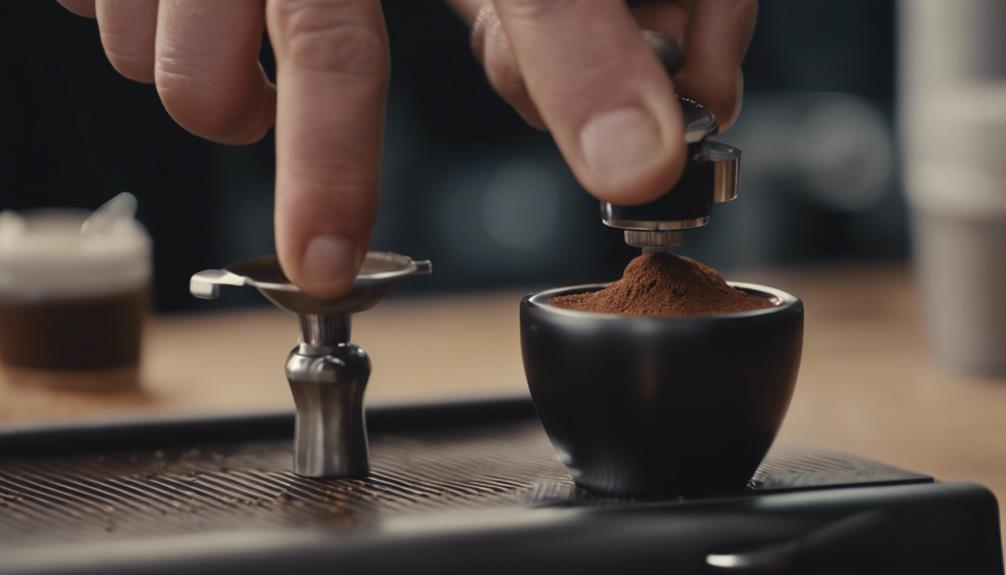
Maintaining consistent tamping pressure is essential for achieving even extraction of espresso grounds. In the world of espresso, the pressure applied when tamping the coffee grounds plays a significant role in the extraction process.
Inconsistent tamping pressure can lead to a host of issues, including uneven extraction. When the pressure varies, it creates channels within the coffee puck. These channels allow water to flow through the grounds unevenly, taking the path of least resistance.
As a result, some areas of the puck may be under-extracted, while others are over-extracted. This imbalance in extraction can drastically affect the flavor profile of your espresso. To avoid under-extraction problems, baristas must aim for a level and consistent tamp.
Suboptimal Water Quality
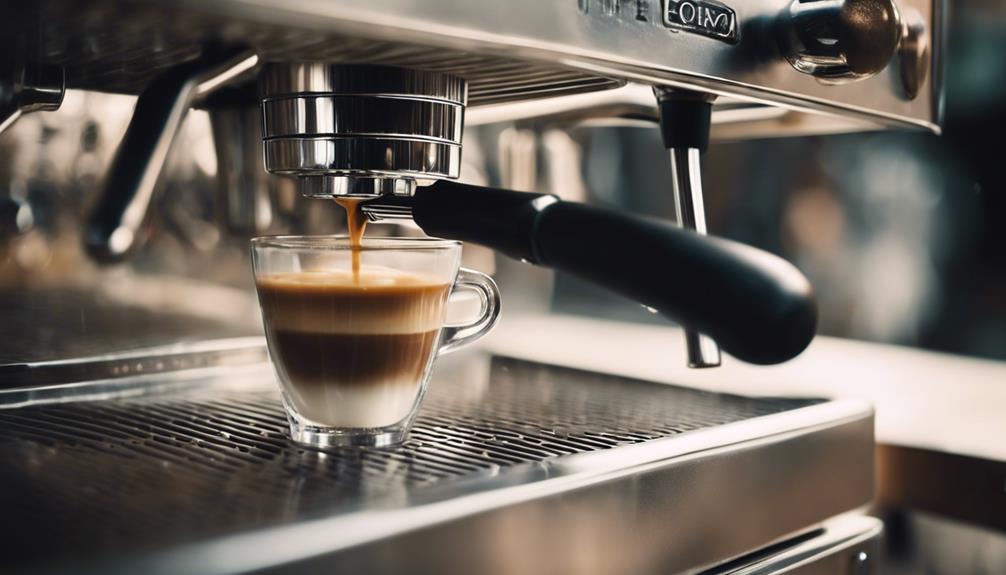
How does suboptimal water quality impact the extraction and taste of your espresso?
The quality of water used in brewing espresso plays an essential role in the final outcome. Here's how it affects your espresso:
- Impurities in Water: Unfiltered water containing impurities can alter the flavor profile of your espresso, leading to off-tastes that mask the true potential of the coffee grounds.
- Mineral Content: The minerals present in water can greatly impact the extraction process. High mineral content can hinder proper extraction, resulting in under-extracted espresso that lacks complexity.
- Extraction Efficiency: Suboptimal water quality can influence the efficiency of extracting flavors from the coffee grounds. This can lead to a less flavorful and unbalanced espresso experience.
To ensure a consistently good espresso, using filtered or bottled water with the right mineral content is essential.
Proper water quality is key to achieving a well-balanced extraction and enjoying the true flavors of your coffee grounds.
Frequently Asked Questions
Why Is My Espresso Shot Under Extracted?
Your espresso shot might be under extracted due to factors like grind size, water temperature, or brew time. These elements can impact the extraction process, leading to a lack of balance in flavors and intensity.
If your shot tastes sour, salty, or thin, it's likely under extracted. Insufficient contact time with water is a common cause. Proper extraction is key for a well-balanced espresso shot.
Adjusting these variables can help improve your extraction results.
Why Is My Espresso Not Extracting Enough?
If your espresso isn't extracting enough, it could be due to several factors. Check the grind size, as a too coarse grind can lead to under-extraction.
Make sure you're using enough coffee in the portafilter, adjust water temperature if it's too low, and watch the brewing time to prevent short shots.
Proper extraction is key for a balanced and flavorful espresso shot. Make these adjustments for a better extraction result.
How Do You Fix Slow Extraction Espresso?
To fix slow extraction in espresso, there are several steps you can take:
- Adjust the grind size to finer settings.
- Guarantee the water temperature is at least 195°F.
- Check for clogs in the machine.
- Increase brewing pressure within the recommended range.
- Experiment with different tamping pressures to improve extraction speed.
What Causes Over Extraction in Espresso?
Over-extraction in espresso results from excessively fine coffee grounds causing slow percolation. This leads to bitter flavors and full-bodied, burnt aromas due to prolonged contact time with water.
Too much coffee in the filter can hinder water flow, extracting unwanted bitter compounds. Understanding grind size and coffee dose is key to preventing over-extraction.
Adjusting these factors can help you achieve a balanced and flavorful espresso without the bitterness of over-extraction.
Could Under Extracted Espresso Cause a Bitter Taste?
Understanding bitter espresso taste is crucial in ensuring a perfect cup. Could under extracted espresso cause a bitter taste? Yes, under extraction can lead to bitterness due to lack of proper extraction of flavors. Adjusting grind size and brew time can help in achieving a balanced and nuanced espresso flavor.
Can Long Espresso Extraction Times Lead to Under Extraction?
Mastering long espresso extraction times is crucial to avoid under extraction. Prolonged extraction can lead to a weak, sour, and underdeveloped flavor profile as it draws out more undesirable compounds. It’s essential to find the right balance to ensure a rich and well-extracted espresso.
Conclusion
To sum up, achieving the perfect espresso extraction requires attention to detail and precision. From water temperature to coffee grind size, every factor plays an essential role in the final cup.
By understanding the causes of under-extracted espresso, you can make adjustments to improve your brewing technique and elevate the quality of your coffee experience.
Remember, a well-extracted espresso is like a symphony of flavors, harmoniously blending to create a truly delightful sensory experience.
